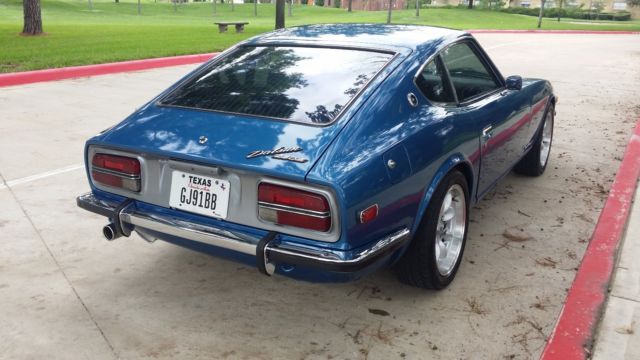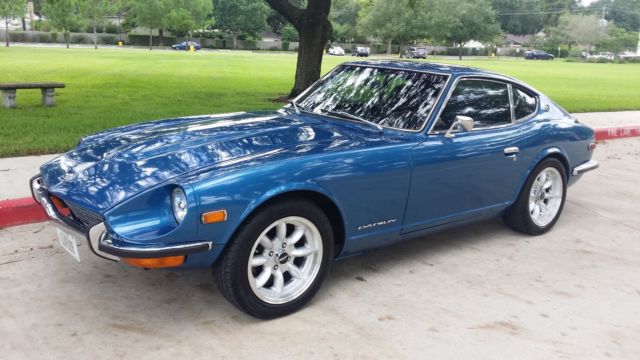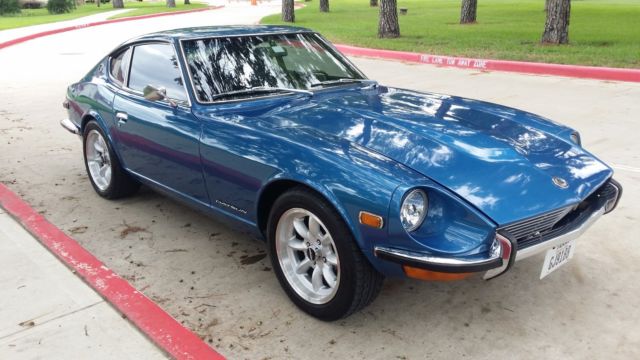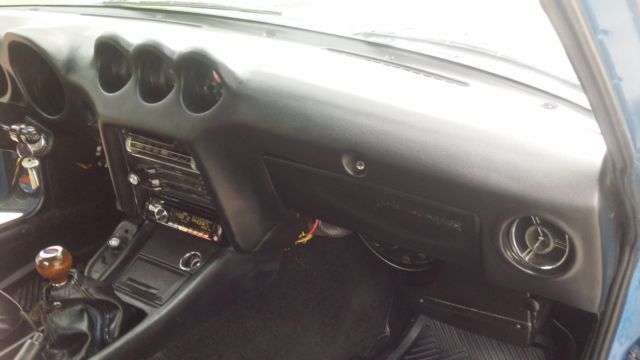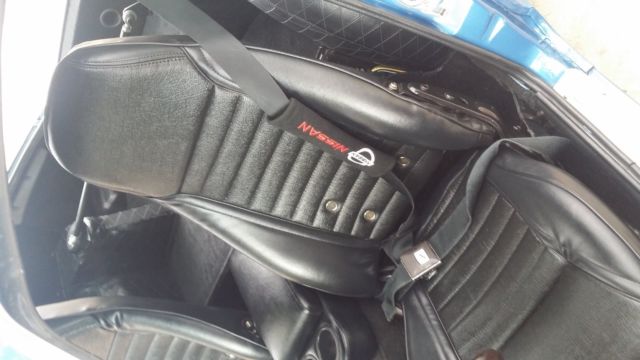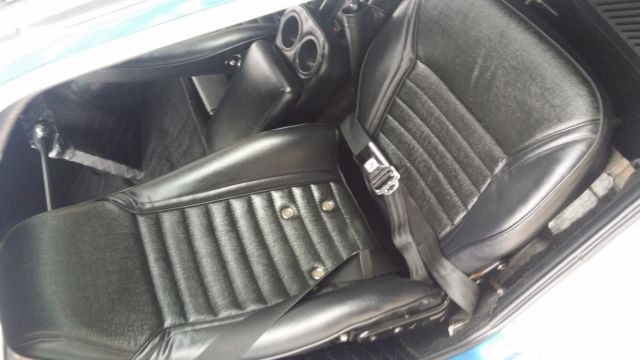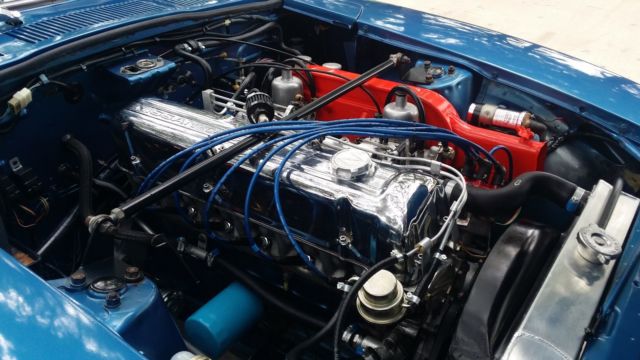1971 Datsun 240z - Show Stopper
- Condition: Used
- Make: Datsun
- Model: Z-Series
- SubModel: Z
- Type: Coupe
- Trim: Coupe
- Year: 1971
- Mileage: 66,168
- VIN: HLS30-37174
- Color: Blue
- Engine size: L24
- Number of cylinders: 6
- Power options: Air Conditioning
- Transmission: Manual
- Drive type: Rear
- Interior color: Black
- Drive side: Left-hand drive
- Vehicle Title: Clear
- Location: Houston, Texas, United States
Description
Show Stopper !
California Restoration.
Unsure of actual miles, showing 66,000.
Transmission swapped to 5 speed.
NON-refundable deposit. It is a lot of effort to post, run through an auction and lose potential buyers.
The 1970 240Z was introduced to the American market by Yutaka Katayama, president of Nissan Motors USA operations, widely known as "Mister K". The 1970 through the mid-1971 model year 240Z was referred to as the Series I. These early cars had many subtle but notable features differing from later cars. The most easily visible difference is that these early cars had a chrome 240Z badge on the sail pillar, and two horizontal vents in the rear hatch below the glass molding providing flow through ventilation. In mid-1971, for the Series II 240Z-cars, the sail pillar emblems were restyled with just the letter Z placed in a circular vented emblem, and the vents were eliminated from the hatch panel of the car. Design changes for the US model 240Z occurred throughout production, including interior modifications for the 1972 model year, and a change in the location of the bumper over-riders, as well as the addition of some emission control devices and the adoption of a new style of emissions reducing carburetors for the 1973 model year.
In Japan, it was exclusive to Nissan Japanese dealerships called Nissan Bluebird Stores, and was first introduced in Japan in 1969.
The 1970 models were introduced in October 1969, received the L24 2.4-liter engine with a manual choke and a four-speed manual. A less common three-speed automatic transmission was optional from 1971 on, and had a "Nissan full automatic" badge. In 2004, Sports Car International named this car number two on their list of Top Sports Cars of the 1970s.
Specifications
Engine: 2,393cc (2.4L; 146.0cuin) L24inline-six engine, cast iron block, alloy head, two valves per cylinder,[2] seven-bearingcrankshaft,[2]SOHC,[2]compression ratio 9.0:1; Maximum recommended engine speed 7,000 rpm.
·Bore X stroke: 83mm ×73.7mm (3.27in ×2.90in)
·Fuel system: Mechanical fuel pump, twin Hitachi HJG 46W 1.75in (44mm) SU-typecarburetors[2]
·Power: 151bhp (153PS; 113kW) at 5,600rpm (SAE gross)
·Torque: 146lb⋅ft (198N⋅m) at 4,400rpm (SAE gross)
·Transmission: Four-speed manual, five-speed manual, or three-speed automatic (after September 1970)
·Final drive ratios:
·Four-speed manual transmission: 3.364:1 (37:11)
·Five-speed manual transmission: 3.90:1 (39:10) (not available in US)
·Three-speed automatic transmission: 3.545:1 (39:11).
·Brakes:
·Front: 10.7in (270mm) discs
·Rear: 9.0in (230mm) x 1.6in (41mm) drums
·Suspension:
·Front: Independent with MacPherson struts, lower transverse and drag links, coil springs, telescopic dampers, anti-roll bar[2]
·Rear: Independent with Chapman struts, lower wishbones, coil springs, telescopic dampers[2]
·Steering: Rack and pinion,[2] 2.7 turns lock to lock
·Wheels: 4.5J-14 steel wheels with 175SR14 tires
·Top speed: 125mph (201km/h)
·0 to 60mph (97km/h): 8.0s
Typical fuel consumption: 21mpg‑US (11L/100km; 25mpg‑imp
Here is what I know.Added or RebuitSubframe Connectors
Huge Front and Rear Sway Bars
Strut Braces Front and Rear
Eibach Progressive Rate Springs
Tokico Shocks
16 Inch Panasports Wheels (Genuine)
Looks Like Original 240 Block
E31 Head
Street Cam
Motor Rebuilt in 2000 by "AWESOME Z"
Ztherapy Carbs
Big Aluminum Radiator
R200 LSD Rear End Upgraded/Rebuilt with 411 Gear Ratio
5 Speed Tarnsmission from a Later 280ZX
Short Throw Shifter
Nissan Competition Headers
2.5 Custom Exhaust
Air Conditioning Restored I Think 134A
4 Piston Calipers / Upgraded Rotors
SS Brake Lines
Painted Approx 2000
Seats Re-webbed and Upholstery Both front Seats Like New (2015)
New Door and Trunk Gaskets
Dyna-Mat Complete
Gas Tank Restored 2017
Carbs Rebuilt 2017
Kenwood Radio/Blue Tooth/Cell/ Amplifiers/ Subwoofer
 2 DATSUN Z's -1971 Datsun 240z Spyder 5 Spd Rocket & 1973 Datsun 240z 4 Spd Coup
2 DATSUN Z's -1971 Datsun 240z Spyder 5 Spd Rocket & 1973 Datsun 240z 4 Spd Coup
Mileage: 4,252
 1972 Datsun 240Z Restored Show-Car,Race-car,Street-Car 240z 260z 280z s30 BRE
1972 Datsun 240Z Restored Show-Car,Race-car,Street-Car 240z 260z 280z s30 BRE
Mileage: 5000
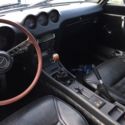 1971 Datsun 240Z 1st Generation Sport Coupe, 240Z, Nissan Fairlady Z, S30, E31
1971 Datsun 240Z 1st Generation Sport Coupe, 240Z, Nissan Fairlady Z, S30, E31
Mileage: 93,470
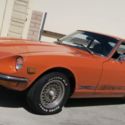 1971 DATSUN 240Z 240Z SURVIVOR! ALL ORIGINAL! CLEAN! RUNS EXCELLENT
1971 DATSUN 240Z 240Z SURVIVOR! ALL ORIGINAL! CLEAN! RUNS EXCELLENT
Mileage: 59,579
 1971 Datsun 240z Spyder 5 Speed Rocket - Early 71 240z Model W/Low Miles & Vin #
1971 Datsun 240z Spyder 5 Speed Rocket - Early 71 240z Model W/Low Miles & Vin #
Mileage: 4,254
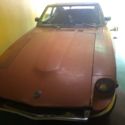 1971 Datsun 240z 260 2+2 240z parts car
1971 Datsun 240z 260 2+2 240z parts car
Mileage: 100000
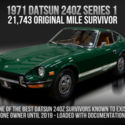 1971 Datsun Datsun 240Z Series 1 - 21,743 Original Mile Survivor - Bringatrailer
1971 Datsun Datsun 240Z Series 1 - 21,743 Original Mile Survivor - Bringatrailer
Mileage: 21743
 1973 datsun 240z Original owner show car
1973 datsun 240z Original owner show car
Mileage: 1,813
 1972 datsun 240z, 240Z, datsun, Z, z car, orange, classic, 6 cylinder, manual
1972 datsun 240z, 240Z, datsun, Z, z car, orange, classic, 6 cylinder, manual
Mileage: 86,175
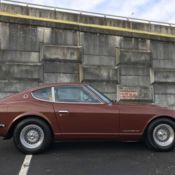 1973 datsun 240z Original owner show car - NO RESERVE
1973 datsun 240z Original owner show car - NO RESERVE
Mileage: 1,813



